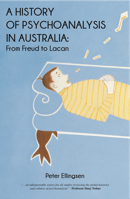Times are tough and the Government is giving us money. We are encouraged to spend it. I can’t help thinking that Rudd’s economic arousal package should come with a health warning – ‘This money is to stimulate the economy, but don’t expect it to make you happy. Money can directly damage every aspect of your life. Beware of passive effects.’
The warning won’t be there, of course, and the money will be welcome, and, in most cases, useful. If only it was just currency to buy things, and not a treacle trap for deflecting reality. This is something Freud understood when he warned that happiness, being the deferred fulfillment of an infantile wish, could not be conjured up with wealth.
We become happy when we get what we longed for as children, and as children don’t desire money, the folding stuff has its limitations: More than that, risks. To amass huge amounts of money is to sacrifice or defer desire, and as such, evokes the death drive; hence the need for a skull and crossbones logo on windfalls.
It is not just that money can stand in for so many other things—love for instance—but even when we get it, we are not able to freely decide how to spend it: That decision is all too often in the slippery hands of marketing, advertising and public relations specialists.
I have just finished reading a biography of Edward Bernays (1891-1995), widely considered to be the father of public relations. Bernays was born in Vienna in 1891. His father was Ely Bernays, brother of Freud’s wife Martha Bernays. His mother was Freud’s sister, Anna. In 1892 the Bernays family moved to New York City. Edward graduated from Cornell University with a degree in Agriculture, but chose the new field of public relations as his career. In 1919 Bernays opened an office in New York as a Public Relations Counselor.
Larry Tye’s biography of Bernays, The Father of Spin, reveals him as a preening, moustached, braggart of a man. Bernays regarded his famous Uncle Sigmund as a mentor and was quick to trade on his name to increase his standing. Freud, in turn, viewed his young nephew with consternation and suspicion and they had little actual contact.
One of Bernay’s early clients was the American Tobacco Company. Women didn’t smoke in public at the time. Bernays employed some young models to march in the New York City parade. He told the press that a group of women’s rights marchers would be lighting ‘torches of freedom’ during the march. The models lit their Lucky Strike cigarettes in front of the waiting photographers. It was a triumph of manipulation. All of the major newspapers ran photographs of the attractive women holding Lucky Strike cigarettes to their mouths. The New York Times headline was ‘Group of Girls Puff at Cigarettes as a Gesture of Freedom’. Smoking skyrocketed among women. Later, when medical evidence on the dangers of smoking came to light, Bernays suppressed it and continued to work for the lucrative tobacco lobby. He did, however, direct his wife to stop smoking.
Bernays referred to the technique of molding opinions as the ‘engineering of consent’. In his book, Progaganda, Bernays writes, ‘If we understand the mechanism and motives of the group mind, is it not possible to control and regiment the masses according to our will without their knowing about it? The recent practice of propaganda has proved that it is possible, at least up to a certain point and within certain limits.’
It is difficult to see where Bernays’ limits might have been. He worked on behalf of the United Fruit Company and the U.S Government to help overthrow the democratically elected president Arbenz of Guatemala. The United Fruit Company dominated corrupt governments in Central America using exploitative labour practices to produce cheap bananas for the U.S. market. President Arbenz wanted to release farming land from ownership by private multinational corporations and return it to the peasants. Bernays placed articles in the U.S media branding Arbenz as a communist.
Cigarettes, toothpaste, bacon, stockings, automobiles and soap; Bernays was the master manipulator in many successful PR campaigns. Bernays often justified his methods by referring to the discoveries of his famous uncle. They were, however, diametrically opposed in their approaches. Freud’s psychoanalysis is a private and individual act—an act of freedom. Through free association a patient can uncover their unconscious drives and motivations. By speaking, attending to dreams and slips of the tongue, the unconscious can be revealed. Bernays worked actively to hide the motivations of his clients and to disguise the techniques that were being used to change public opinion. Bernays used public relations as a tool of mass control.
Anna Freud contacted her cousin for assistance on the eve of her first trip to America, but like her father, Anna hated interviews with journalists and had little time for public relations. Anna wrote to her friend Grete Birbring after the trip: ‘If I really knew that things like that (news conferences) were inevitable, I would give up or jump into the sea from the Queen Elizabeth and drown myself.’
Whatever we buy with our Rudd handout we will be prey to the poisonous influence of the spin doctors. Every transaction is a complex sleight-of-hand. Most ‘stuff’ is tricked up to look like love. That’s where the Freudian insight really is. What we wanted as children—the deep infantile wish—is always love.

